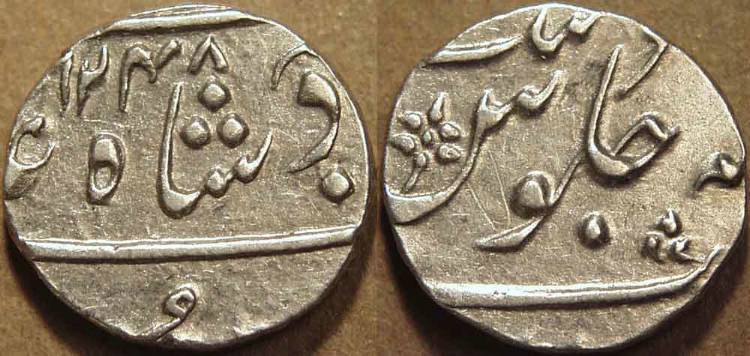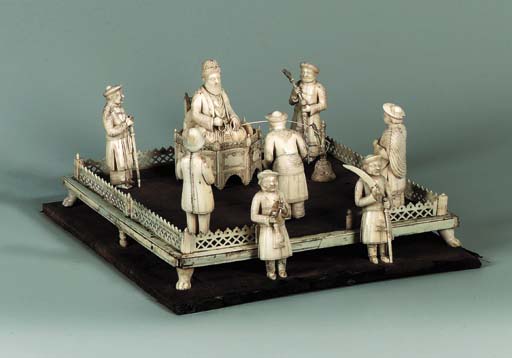
Emperor Akbar II (r.1806-37) holds court, complete with a British
officer; *lot notes*
*Akbar Shah II receives the British
resident;
opaque watercolor and gold, c.1810*
Source:
http://www.askasia.org/teachers/Instructional_Resources/FEATURES/Power_Desire/images.htm
(downloaded Oct. 2004)
*"The Delhi darbar of Akbar Shah II," c.1811*, from the collection of the Aga Khan
Museum (*more
information*)
Source: http://www.akdn.org/museum/detail.asp?artifactid=1647
(downloaded Apr. 2011)
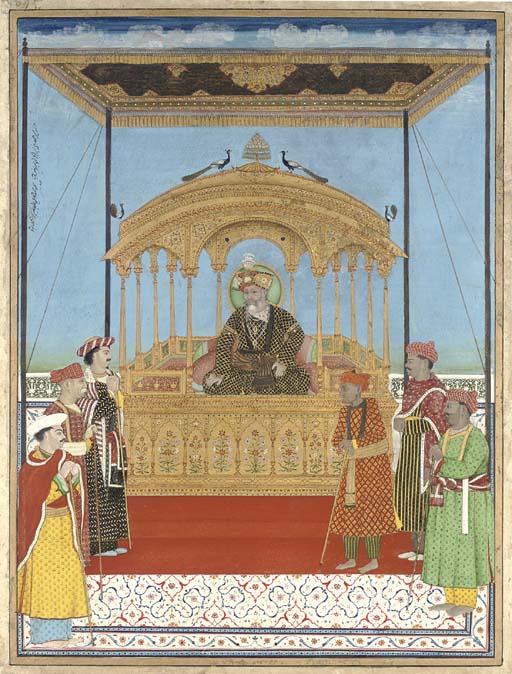
The Delhi Darbar of Akbar II, by Ghulam Murtaza Khan, c.1813; *lot
notes*
*A
large Mughal encampment; a watercolor by Seeta Ram, 1814-15* (BL);
*Sita Ram 1814*
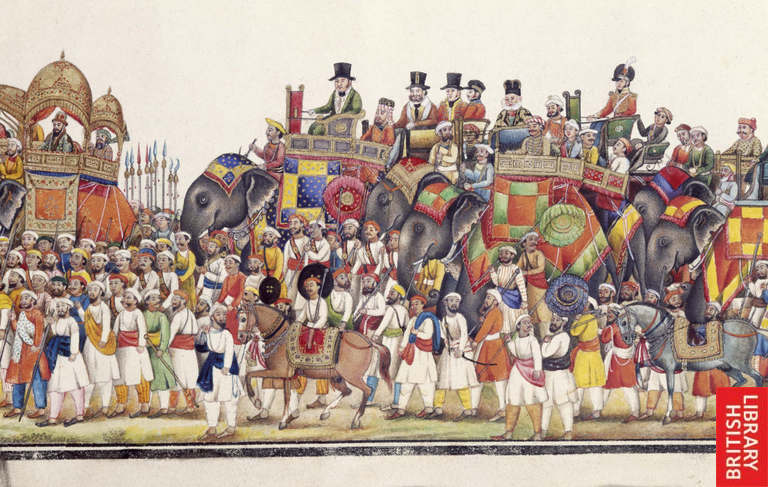
*"Panorama
of
a durbar procession of Akbar II, Emperor of Delhi, 1806-37, probably
on the occasion of the Id or after Ramadan. The Emperor is followed by
his sons, by the British Resident, high officials both Indian and
British,
as well as by troops. The royal procession includes elephants carrying
the royal insignia (sun, umbrella, fish standards, etc.), camels,
horses,
gun-carriages, palanquins, and closed bullock-carriages for the ladies.
Water-colour; 6.25 by 94 ins., by a Delhi artist, c.1815"* (BL)
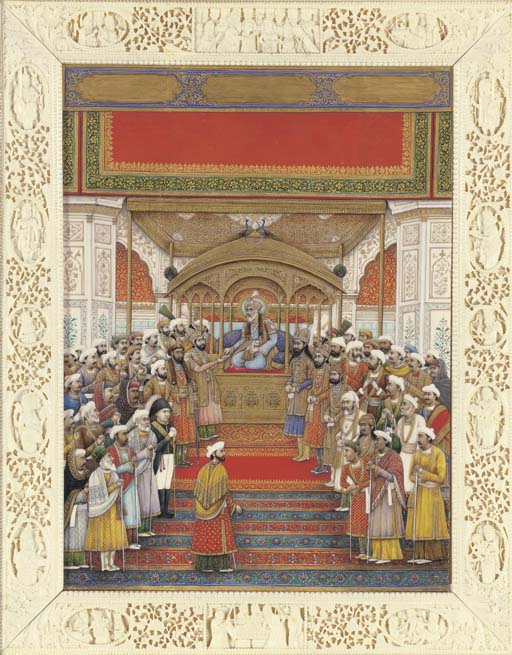
Akbar II holding court, in a more conventional representation,
c.1820;
*lot notes*
*The Delhi Darbar of Akbar II by Ghulam
Murtaza
Khan, c.1820*; *lot notes*

*"Akbar
II (1806-37). Portrait. A halo round his head, wears a fur-trimmed
padded
coat. He is seated holding a hookah-snake in his left hand, and a
writing
case lies on the floor beside him. Water-colour on ivory. Delhi style.
By Ghulam 'Ali Khan (fl.1817-1852), 1827"* (BL)

Akbar II in all his glory, in formal procession, c.1827-30; *lot
notes*
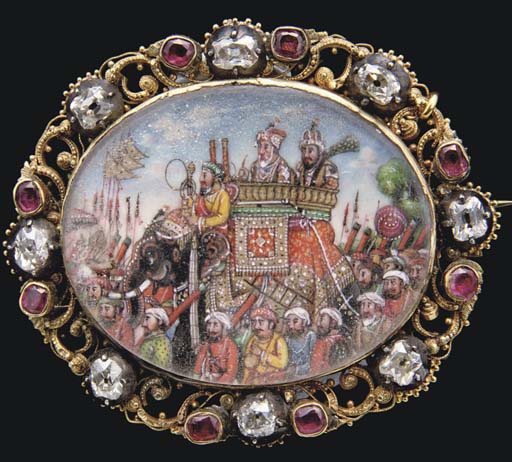
You could also wear a memento of such a procession, in a brooch
(c.1830);
*lot notes*
A British-coined silver half
rupee in the name of Akbar Shah II, Ahmedabad mint, AH 1248 (1832/3)
Source:
http://www.vcoins.com/ancient/coinindia/store/viewitem.asp?idProduct=930
(downloaded Aug. 2008)
"British India, Bombay Presidency, Silver half rupee in the name of
Muhammad Akbar II (1806-1837), Ahmedabad, AH 1248. Obverse: Legend,
naming Muhammad Akbar, and with AH date 1248 in the middle
register. Reverse: Legend, including mint name Ahmedabad, British mark
5-petalled flower with stem. Date: AH 1248 (= 1832-33 CE). Weight: 5.83
gm. Diameter: 17-18 mm."
*The Darbar of Akbar II, Jaipur or
Delhi
School, c.1850*; *lot notes*
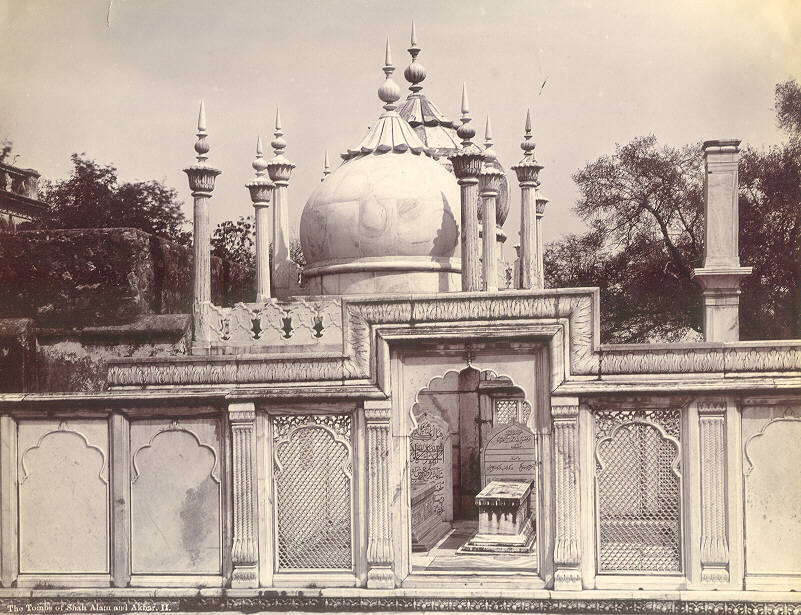
"The Tombs of Shah Alam and Akbar II" at the dargah of Qutb
Sahib,
Mehrauli; a gelatin silver photo, c.1890's
Source: ebay, Nov. 2007
== Indian Routes
index
== Indian Routes
sitemap
== Glossary == FWP's
main page ==








